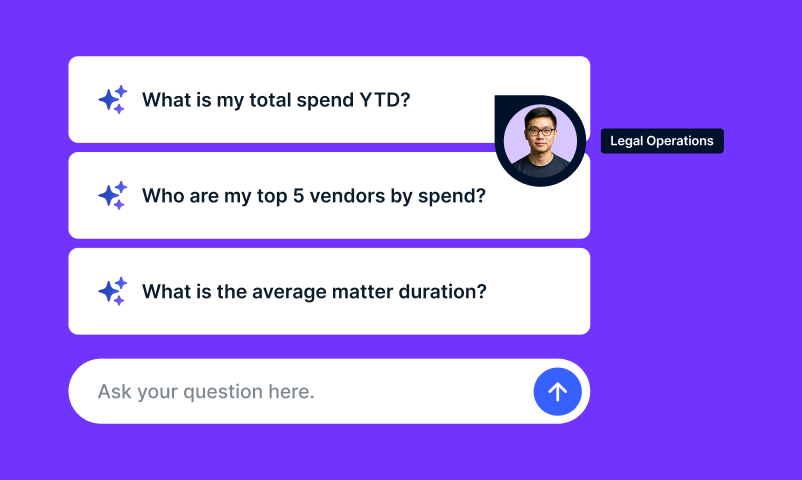The landscape of legal technology is all about Enterprise Legal Management (ELM). As a category of technology, ELM solutions are loosely identified as integrated matter and spend management systems, but their overall goal is to help an enterprise manage legal issues and risk consistently throughout the organization.
Legal departments are adopting integrated solutions in droves because they help in-house counsel streamline matter, contract, and e-billing processes. The result of this streamlining effect is that departments are better able to handle the increased risk and compliance burdens and reduce their overall legal spend. With more work moving in-house and departments tasked with doing more with tighter budgets, advanced legal operations management is no longer a luxury, it is a necessity. Many legal departments have adopted enterprise systems to handle either matter or spend management or both.
Unfortunately, many enterprise management systems are not helping legal departments address the most critical issues facing their organization – mainly project visibility and risk-management.
The Limitations of Traditional Enterprise Legal Management Software
Enterprise legal management software does not effectively address process or collaboration.
Traditional enterprise legal management systems are mostly data and task-oriented systems that focus on maintaining large databases of information related to matters and spend. A traditional enterprise legal management solution is a system of record, so it will be less likely to track day-to-day activities within the legal department. Although some claim to address process and collaboration, the very nature of these large data-driven solutions prohibit them from doing so effectively. What results from a traditional enterprise system is a recording of the final data, such as a contract or document relating to a matter, without the context of the activities that surround it.
What these systems claim to do is enterprise legal “management,” when, what they actually do is provide a “database.” Traditional matter and spend management solutions do not address process or collaboration in a way that facilitates the implementation of consistent, repeatable processes for the variety of legal issues managed across a large enterprise. This lack of visibility into the context around these legal issues exposes companies to undue amounts of risk. And, the lack of process-driven workflow engines that work the way you work keeps adoption rates low and return on investment difficult to achieve.
One example of this is the process of reviewing and approving NDAs. For many organizations, the non-disclosure agreement (NDA) lifecycle is an often-overlooked Achilles heel. Traditional enterprise legal management solutions may store the final document, but there are no productivity tools around its request, creation and execution. These critical documents protect intellectual property, but too often they are pulled together haphazardly, not countersigned, and left to languish in an email inbox. Work commences, and both parties forget about the NDA until a problem arises. While your existing enterprise legal management software may provide a database for the final NDA, how does it handle the process of actually requesting and managing the various approval stages? Moreover, once signed, do you know where to find the executed NDA if a problem arises? Read more: How Ad Hoc Turns NDAs into Nightmares.
Enterprise Legal Software is Not Designed to Evolve with Your Business.
The simple fact is that enterprise legal management software does not work for legal departments and the business users they support in the way IT and management wants to believe it will. For one, enterprise legal management systems take an incredible amount of resources – both time and money. The time it takes to develop and deploy one of these cumbersome systems can take months, even years. Moreover, once implemented, it can take a very long time for the business to see value from the software.
Secondly, changing the software to support new business initiatives is difficult. For as long as it took to create the original enterprise system, it can be just as expensive and time-consuming to bring in new functionality that meets changing business needs.
Facilitate True Enterprise Legal Management with Enterprise Apps
Enterprise Apps are about people and process first.
Innovative legal departments are changing and adapting to help the business they support grow and thrive. In order to do so, they recognize that matter management is not about the database, but rather, successfully managing a legal matter is about process. Implementing and enforcing consistent processes is critical to gaining visibility into how all the various business units may be exposing the company to risk. That visibility leads to better business risk mitigation and more efficient handling of litigation when it does arise.
While a database to store final information is certainly needed, Enterprise Apps like those developed by Onit can fill the “process and collaboration gaps” left by these database-driven systems. For example, when turning out NDAs become a simple, repeatable process, leveraging the NDA App to add consistency and visibility, organizations can stay on top of their legal obligations and reduce their exposure to risk. An App will help you manage the NDA lifecycle from creation to execution, jump-starting what will be a productive working relationship in a fraction of the time and effort than an ad hoc “process.” Read more: Closing the Loop in the NDA Lifecycle.
Enterprise Apps are Designed to Evolve with Your Business.
Enterprise Apps are easy to deploy, support, learn and use. App building platforms like Onit enable non-developers to write SaaS web applications to solve human process problems for enterprise users. Enterprise Apps are hyper-focused on solving problems for your team, and have remarkably high success and adoption rates. Because they are designed to fill the process and collaboration gaps, Enterprise Apps can evolve quickly to meet your changing business needs at a fraction of the customization and administration costs associated with enterprise systems.
While your enterprise legal management software may have a long list of features, our Enterprise App clients measure success by user adoption, rather than feature checklists. Why spend big money on a complex legal management tool that does not address the visibility and the productivity of the human processes at the core of the task?
Ready to consider a new way to manage legal operations? Onit Apps for matter, contract, and spend management will help your legal department provide better service to your businesses and improve your operational efficiency. Contact us or schedule a demo today!



